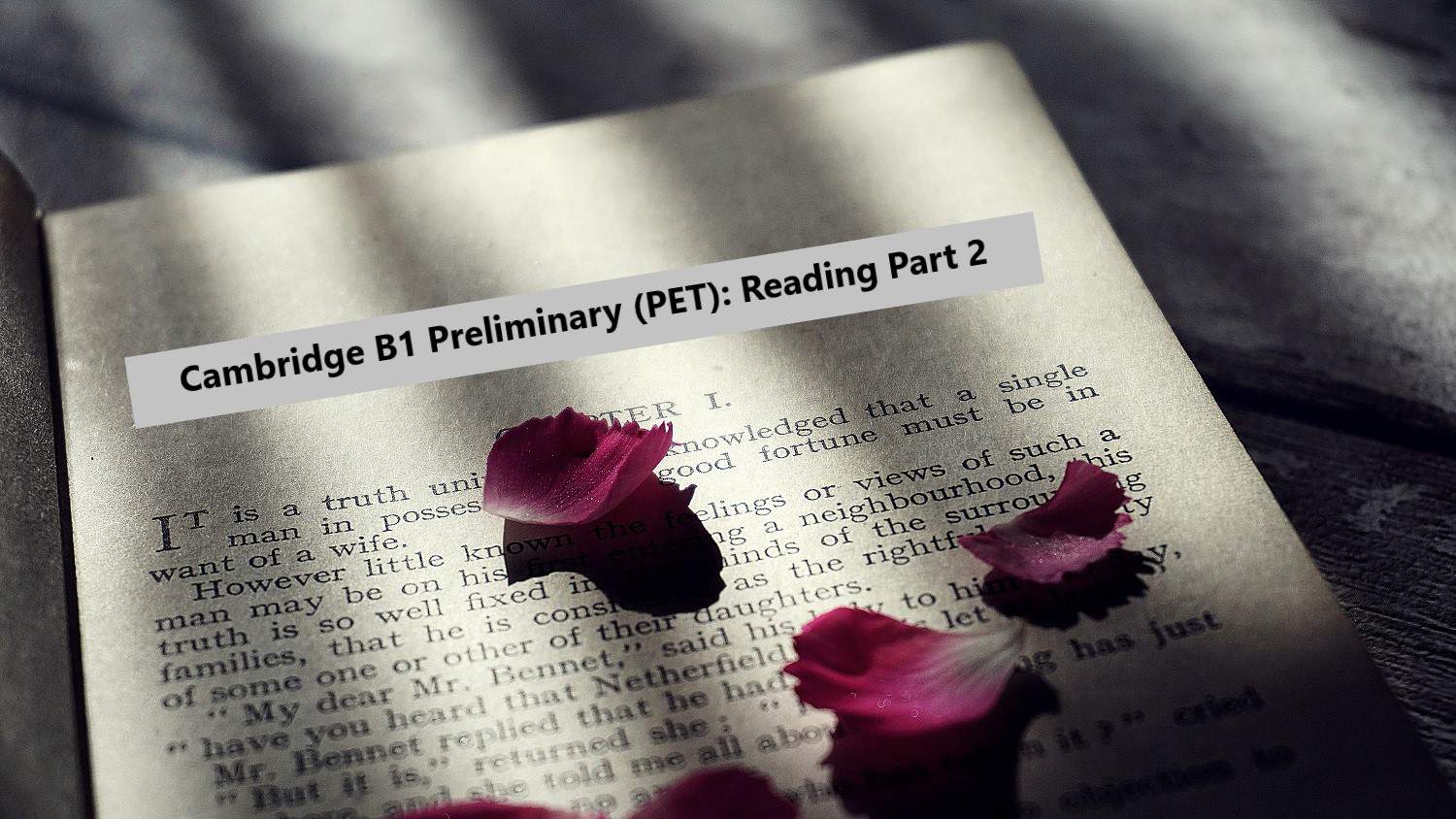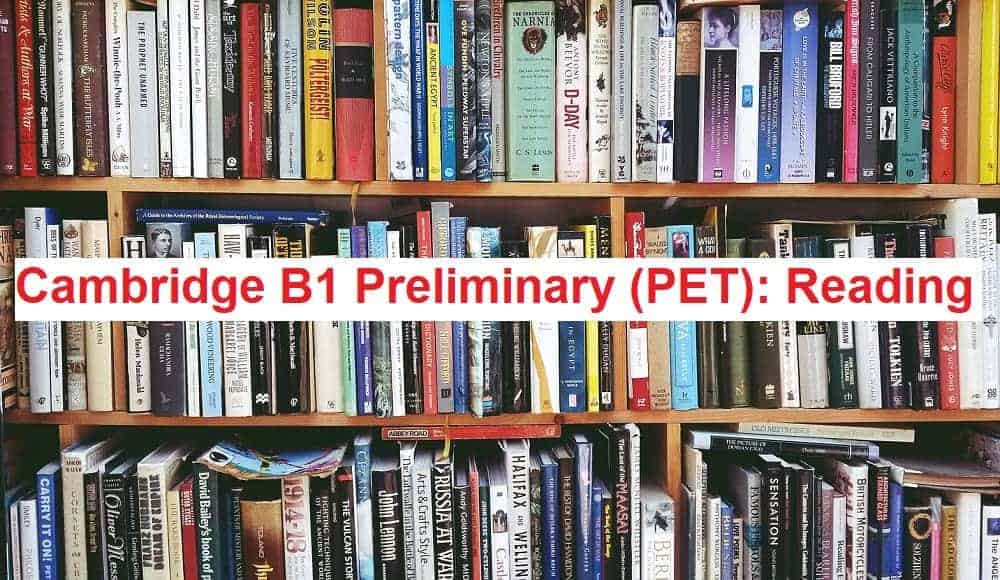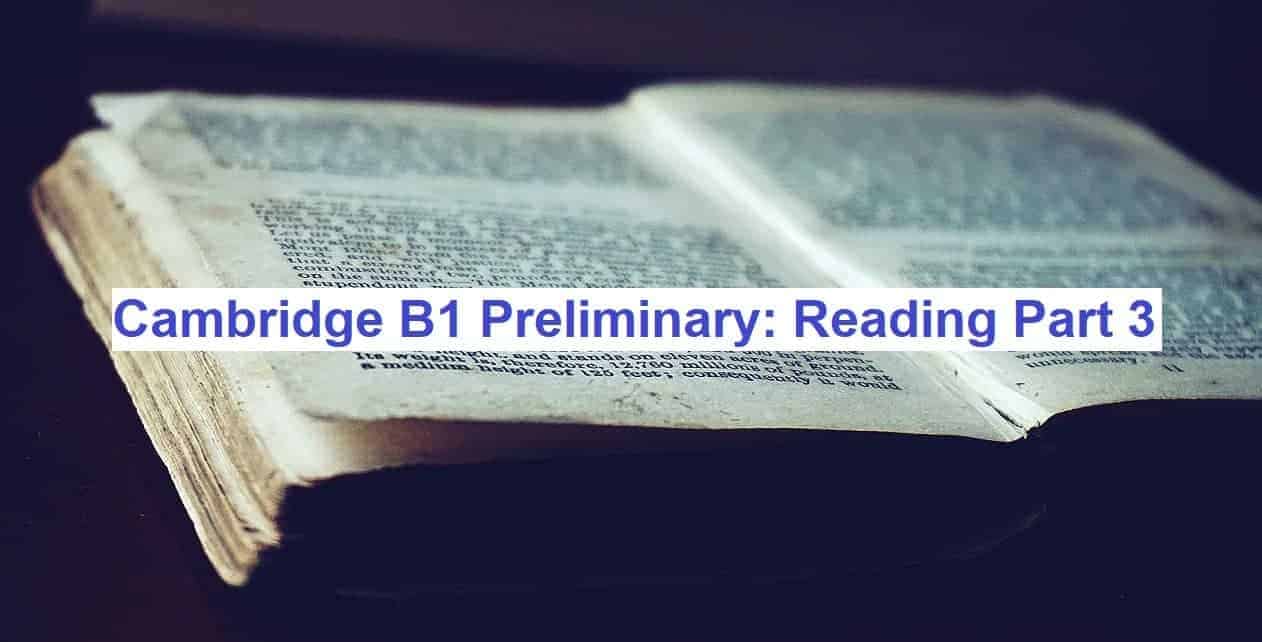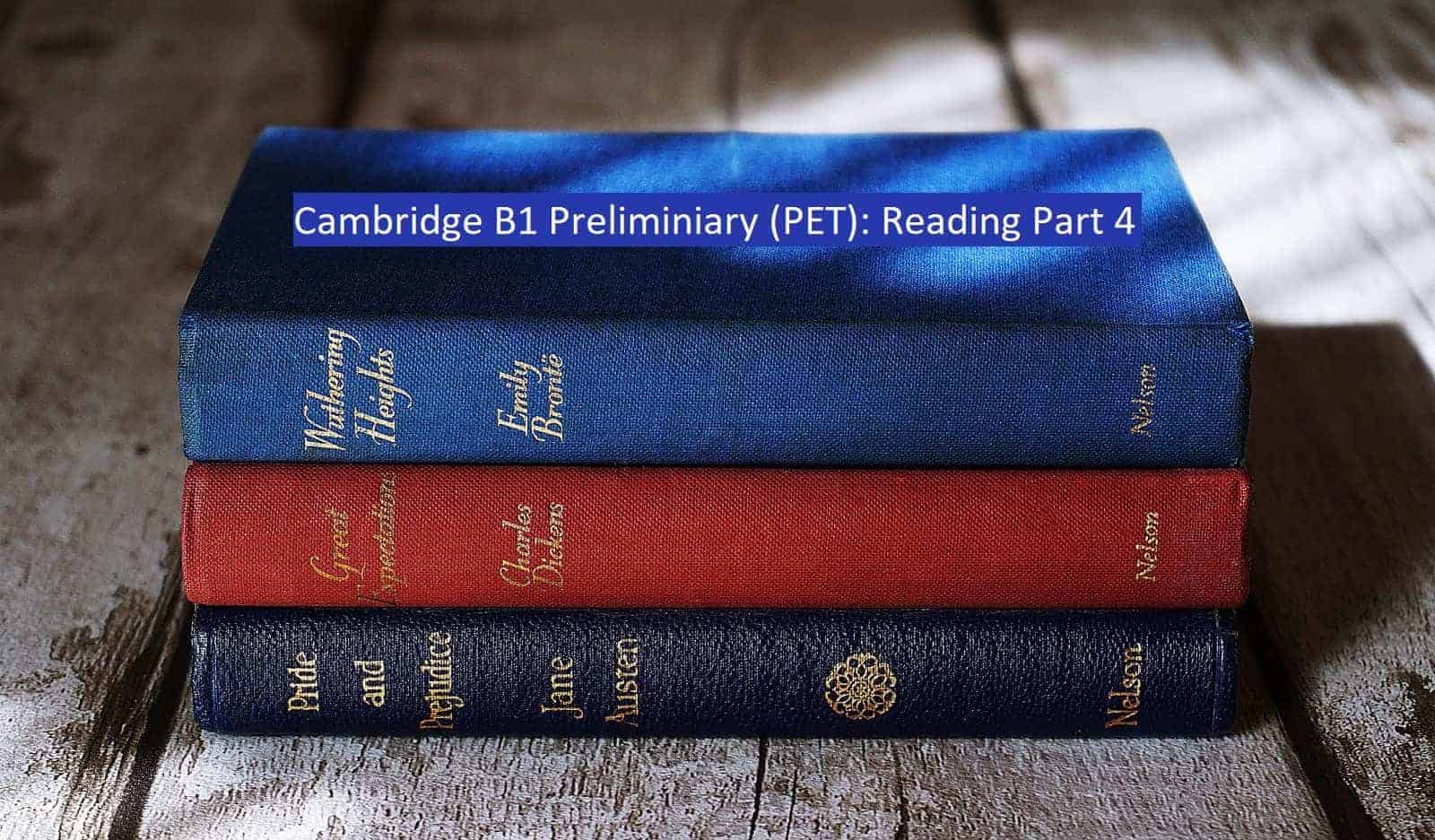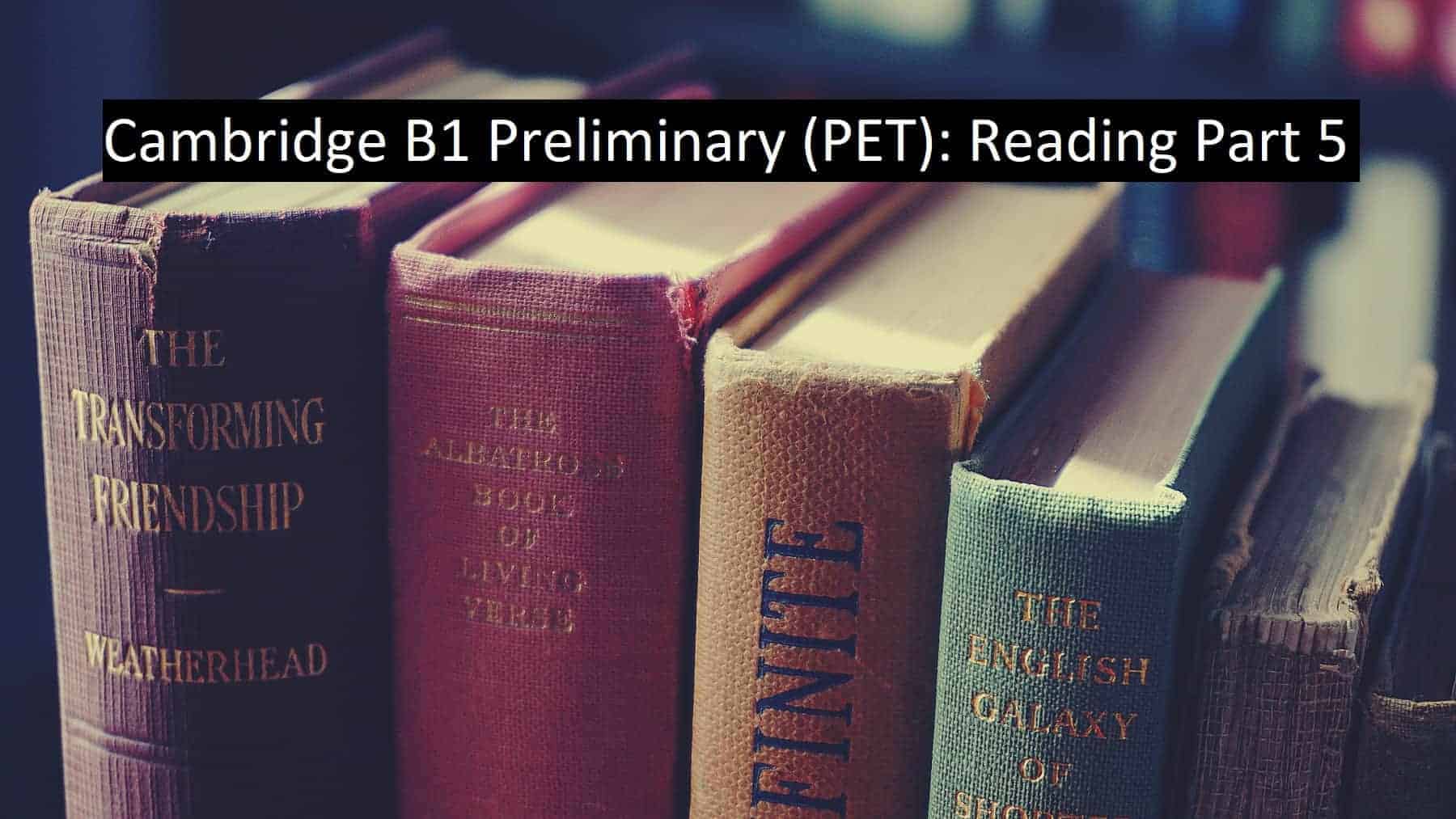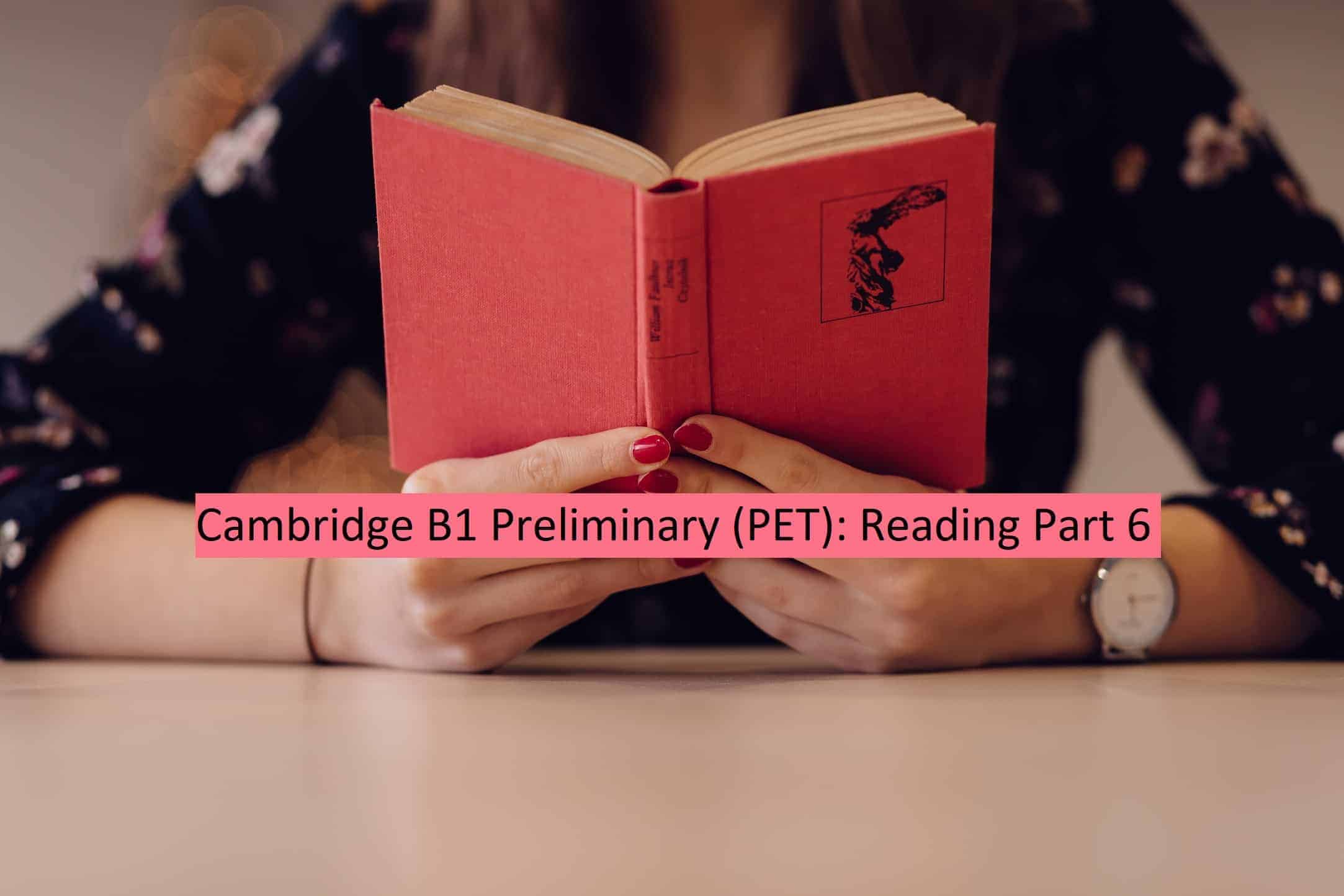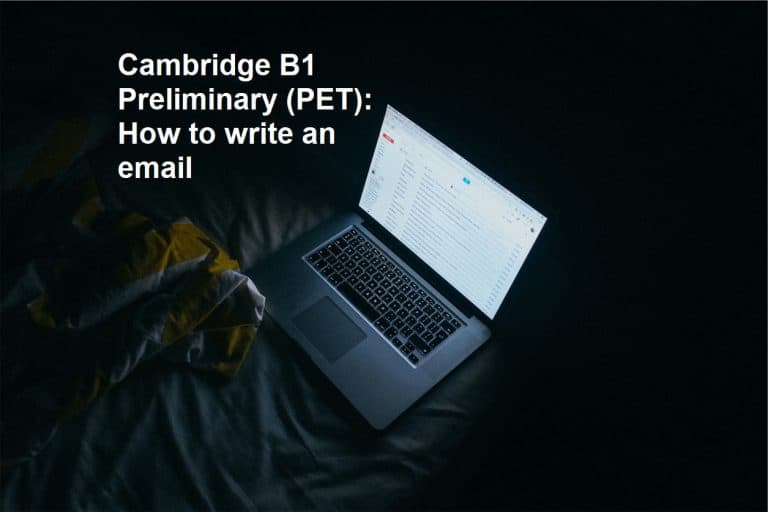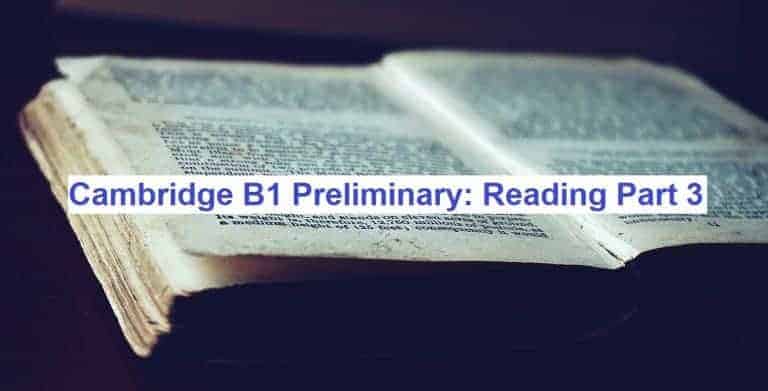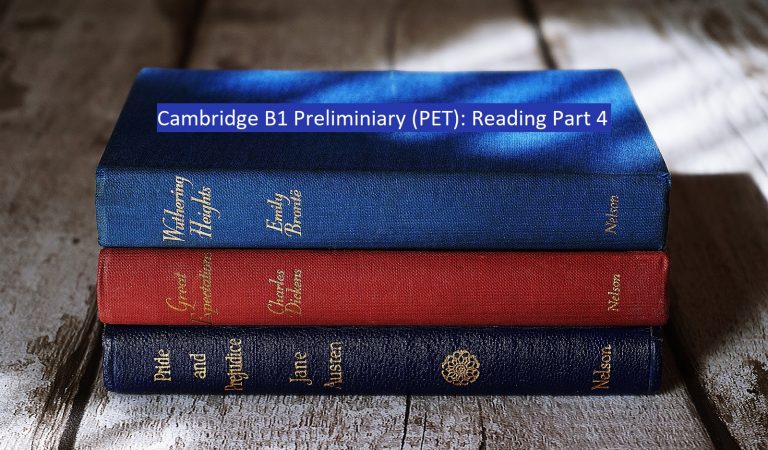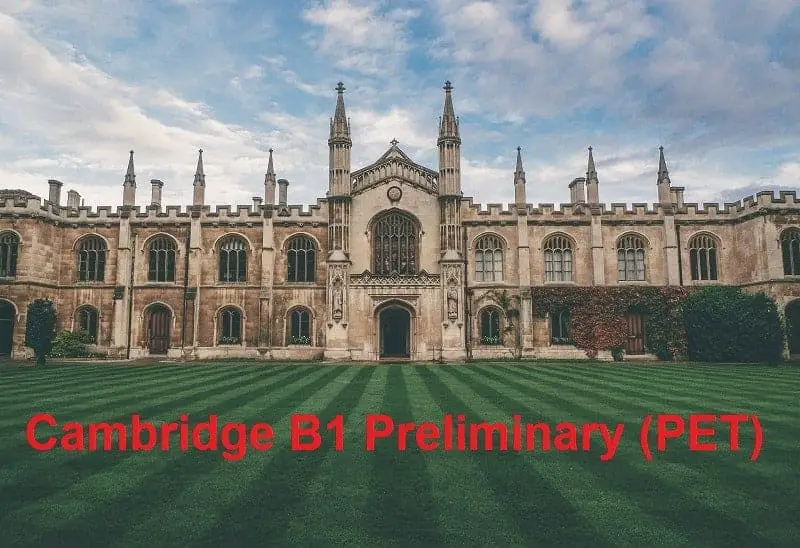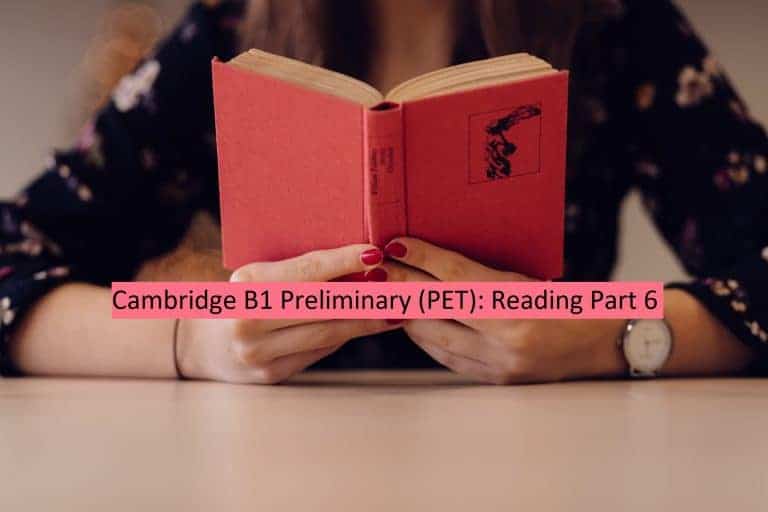Reading Part 2
This article talks specifically about the second part of the Reading paper of the Cambridge English B1 Preliminary exam. I’m going to tell you about all the big and little things that will help you be successful in this task.
If you are interested in information about the whole exam in general, read my article on everything you need to know about PET.
If you look for detailed info about Reading Part 2, then keep reading because you are in the right place.
What do you have to do in Part 2?
Matching – In this task you get the descriptions of five people who all want to do, buy or experience something similar. Match each person to one of eight options.
Part 2 tests you detailed understanding of shorter texts. It is a true reading task unlike Parts 5 and 6 which test your grammar and/or vocabulary.
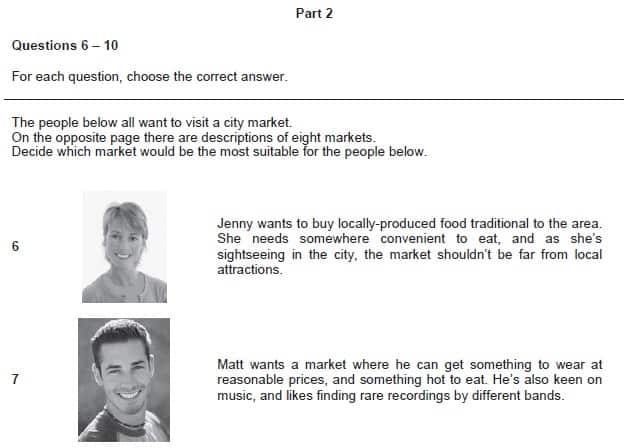
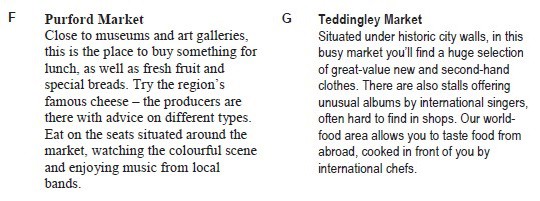
Above, you can see a couple of examples from a Reading Part 2 task. The texts are not very long, but keep in mind that there are a total of five people and eight short texts so, all together, it is quite a lot to read for you.
You have to match the people with the perfect place for each of them. Remember that there are always three extra places which you don’t need to use. Also, the place has to be perfect for the person, which means that the people have to be able to find everything they want in the place you match them to.
In addition, you have to transfer all your answers onto a separate answer sheet that you get at the beginning of the test.
As you might know, the Reading paper of the PET exam has six parts and there are a few important things for you to know. Luckily, I have written another post on teacherphill.com about the B1 Preliminary Reading paper. Simply click on the link to find out more.
What is difficult about Part 2?
Looking at Reading Part 2 we can find a few problems that students sometimes have. First, I’m going to explain to you what these issues look like and then I’m going to show you what you can do to avoid the same mistakes.
Be careful with time
Reading Part 2 includes five descriptions of people and eight texts about different places or activities. That is a total of 13 short texts that you have to read, analyse and match. If you ask me, that sounds like quite a lot of stuff to do and, unfortunately, you also don’t have a lot of time.
The whole Reading paper in B1 Preliminary is 45 minutes long and you have to complete six different tasks. I have told you before that you also have to transfer your answers onto a separate answer sheet so we can already take five minutes away for that, which leaves you with around 40 minutes in total or, more or less, 6 1/2 minutes for each task.
You need to be very careful and pay close attention to your timing. If you spend too much time on one task, that time will be missing for the other ones.
Don’t get distracted
In every Cambridge English exam like B1 Preliminary, B2 First or C1 Advanced you can find that the people who create the questions and write the tasks often try to confuse you. The wrong answers are very similar to the correct one or you can find information connected to all the different possible answers in the same text.
We call these pieces of wrong or confusing information ‘distractors’. You have to practise the different tasks quite a lot to learn the best techniques to deal with these distractors effectively.
The people and the texts need to be a perfect match
In Reading Part 2 you have to match five people to eight different texts. While this might sound quite simple, it can be pretty difficult because, as I mentioned earlier, distractors might lead you to a wrong answer.
There are usually three things that each person is looking for in their preferred place and you have to find that perfect one for them. All three things have to be there in the text for you to make the match.
Tips and strategies for Reading Part 2
Now that you know about the three most common problems in this part of the PET exam, let’s check how you can avoid these mistakes and what the best strategies are to be successful and save time.
Read and analyse what the people want
The first thing you should do when you get to Reading Part 2 is to check what exactly the five different people want from their perfect place. Read each description very carefully and underline the things that are important to each person.
In our example from before this could look like this:
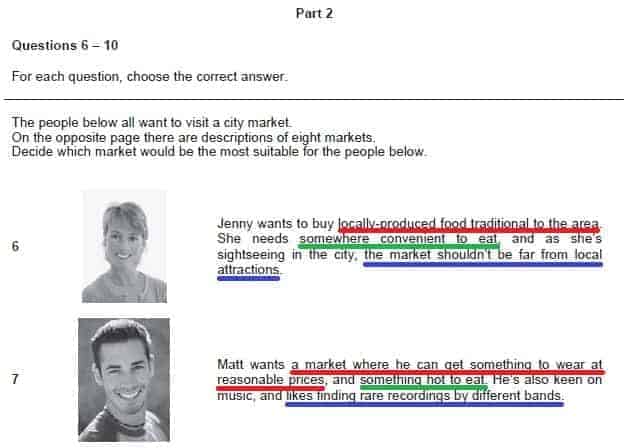
You can see, in different colours, the three things that are important to Jenny and Matt when visiting a city market. It is key for you to find these three things for all five people in order to be able to complete this task. Otherwise, you will have to guess the correct answers and we definitely don’t want that to happen. 🙂
Match the people one by one to their perfect place
After analysing what exactly the five people want in their perfect city market we can now look at the eight short texts and find out which market is right for each person.
Start with the first text and see if you can find anything that matches what any of the people want. If you see something, check if this place offers all three things because remember, it must be a perfect match of all three things.
Repeat this step for the other texts or until you have found the perfect place for all five people.
In this step you need to be careful with synonyms and paraphrasing. Synonyms are words that have the same meaning and paraphrasing means to say the same thing using different words, for example, ‘He doesn’t want to be your boyfriend anymore.’ and ‘He wants to break up with you.’ have the same meaning, but I used different words to say them. You will often find that the words in the descriptions of the people are different from the words in the descriptions of the places.
Again, let’s look at the example from before:

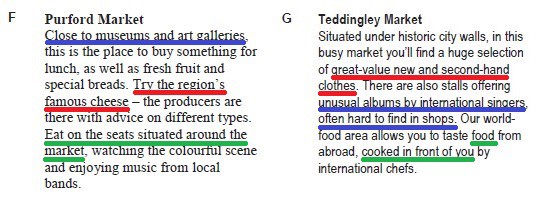
Here, I’ve underlined the most important information again and you can see that text F belongs to Jenny while text G matches Matt.
You should also notice that there are a lot of synonyms and paraphrasing. For example, Jenny wants the market to be close to ‘local attractions’. In text F it says that the market is ‘[c]lose to museums and art galleries’, which are local attractions.
General tips
There are a few things you can do to generally get ready for the Reading paper of the B1 Preliminary exam.
First of all, try to read things in English as often as possible. Even if you only have five or ten minutes every day on the bus to or from work or school, use it practise some reading. Read whatever you want: the news, stories, articles or anything else you enjoy.
You will become a faster reader, which can save you time in the test, and you will see a lot of grammatical structures and new vocabulary that you might see again when you take the exam.
Secondly, think about taking English classes to prepare yourself specifically for the exam. It can be very helpful to have a teacher who can give you feedback on your typical mistakes and things you already do well so you know what you have to improve what you should focus on when getting ready for PET. To find a good school near you have a look at my article about everything you need to know about B1 Preliminary.
Last but not least. think about your time management and the order in which you want to go through the different tasks in the exam. If you want to know more, you can follow the link to my post about the Reading paper in the PET test.
Lots of love,
Teacher Phill 🙂

